The Government is still managing too many large and complex projects, if the new Infrastructure and Projects Authority report is anything to go by, argues Aron Cheung.
In 2017, 143 projects were included in the Government Major Projects Portfolio. This portfolio consists of “the most complex and strategically significant projects and programmes across government”, including the construction of High Speed Rail 2 and Hinkley Point C power station.
The Infrastructure and Projects Authority annual report shows that the Government is continuing to struggle with the implementation of existing projects. So while it is good that the project portfolio has not grown in 2017, it seems that the Government is still managing too many complex projects.
Government is continuing to struggle with smoothly delivering projects.
Major infrastructure projects are given a Red-Amber-Green (‘RAG’) rating by the Major Projects Authority (MPA) - part of the Cabinet Office. The different colours represent:
- Red: Successful delivery of the project appears to be unachievable
- Amber/Red: Successful delivery of the project is in doubt
- Amber: Project delivery is feasible but with significant issues
- Amber/Green: Project delivery appears probable
- Green: Project is on time, on budget and of high quality
Five projects were exempted from having their ratings published this year owing to commercial, defence or national security interests.
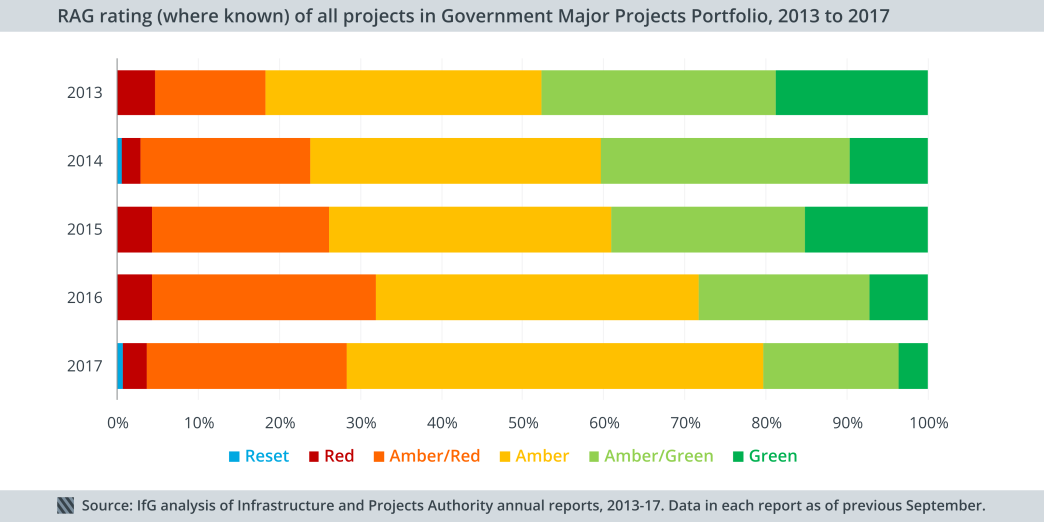
In 2017, over half of the major projects being managed by the Government have an amber RAG rating, up from 38% in 2016. Prompt action is required to ensure that these project costs and timetables do not overrun.
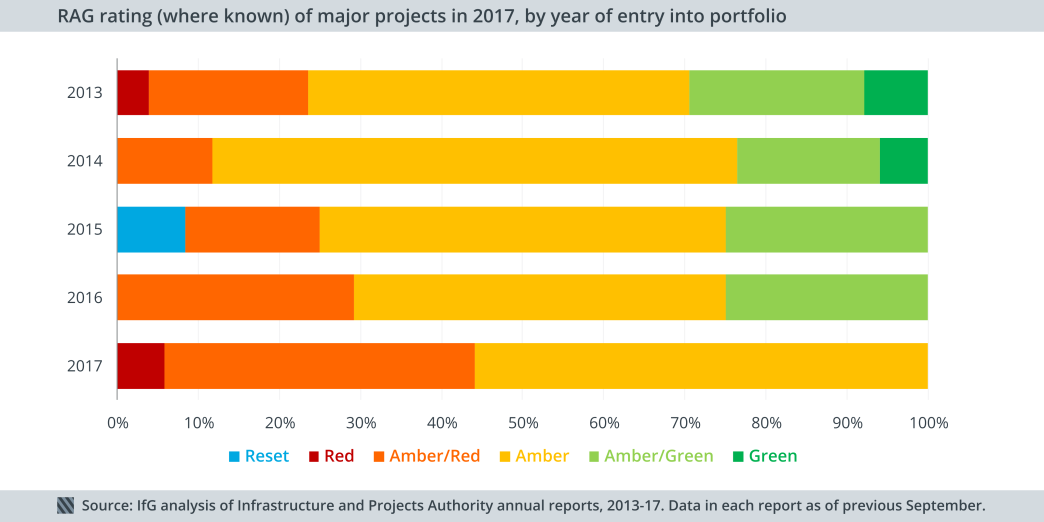
None of the new projects of 2017 were given a green or amber/green rating. This is not altogether surprising, as the portfolio is there to deal with the Government’s most challenging projects so we would expect new projects to have some riskier ratings.
Projects that have been in the portfolio for longer are more likely to have better ratings, so it is concerning that almost a quarter of projects that have been in the portfolio since 2013 are facing major issues, being rated eith amber/red or red.
There are four projects with a red RAG rating:
- Core Production Capability (Ministry of Defence, £1.7bn): the phased regeneration of the current nuclear core production facilities on the Rolls-Royce Site at Raynesway in Derby.
- A303 Amesbury to Berwick Down (Department for Transport, £385m): the construction of twin-bored tunnel of at least 1.8 miles as the road passes Stonehenge coupled with a dual carriageway bypass for Winterbourne Stoke.
- M20 Lorry Area (Department for Transport, £250m): the provision of up to 4,000 HGV parking spaces with safe access to the M20 motorway, to minimize disruption when the Channel Tunnel needs to close. This becomes even more critical with Brexit as the prospect of lorries backing up increases – and illustrates the problems in expanding other port or transit infrastructure to cope with potential post-Brexit pinchpoints.
- Urenco Future Options (Department for Business, Energy and Industrial Strategy, £32m): the sale of the Government’s one-third shareholding in Urenco, a company which provides enriched uranium to the civil nuclear industry.
One project – the Adelphi Modernisation Project (Home Office, £263m) – has been reset in 2017, meaning there has been a significant change to the project business case. It was rated red in 2016.
Government projects are getting more expensive.
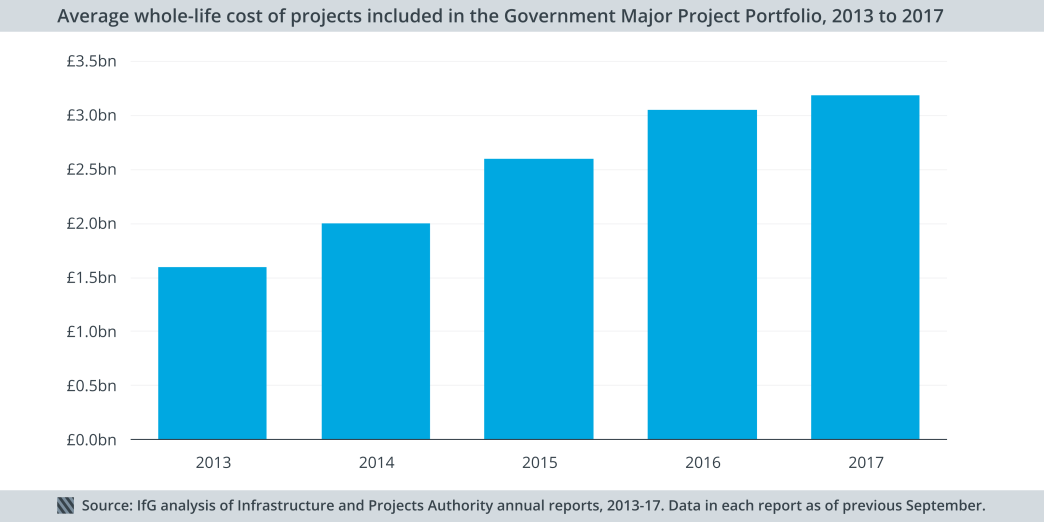
While the number of projects being managed by the Government has stayed the same as last year, the average whole-life cost of projects has grown – rising 4% from £3.05bn to £3.19bn.
This is partly due to smaller projects being merged to create larger ones. The Department for Education, for example, merged two separate school building projects to create a single project worth a combined £4.4bn.
Larger projects can offer significant potential benefits to the economy, but they also tend to be riskier and harder to manage. Based on international experience, nine out of ten projects costing more than £1 billion go over budget.
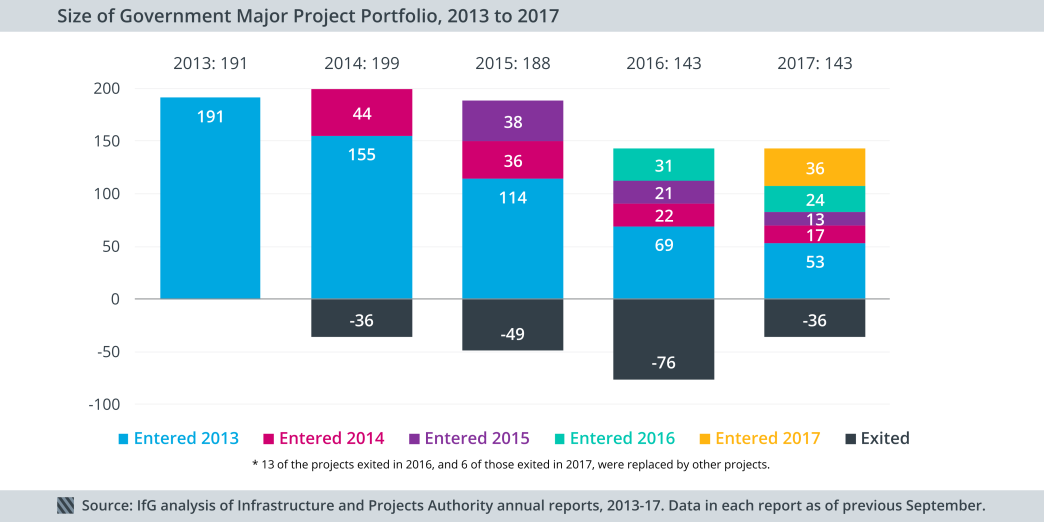
Project costs are also concentrated in several key departments.
The Ministry of Defence’s project portfolio is worth £144bn in 2017. £20.3bn of this relates to the Nuclear Warhead Capability Sustainment Programme. A further six projects managed by the department do not have declared costs, due to Freedom of Information exemptions being applied in relation to defence or commercial sensitivity.
The Department for Business, Energy and Industrial Strategy has a portfolio worth £115bn. This is largely due to several very expensive projects – Hinkley Point C (£49.9bn, up from £14.5bn in 2015), Sellafield (£30bn) and the Smart Meters Implementation Programme (£17.2bn).
The Department for Transport’s project portfolio is worth £97.1bn, with High Speed Rail accounting for £55.7bn of this.
The number of infrastructure projects is the same as last year.
The size of the portfolio was unchanged compared to 2016, after a large drop in the previous year. A quarter (36) of the Government’s major projects from last year have left the portfolio, with the same number of projects being added. Of the projects that have ended, six have been replaced by other projects.
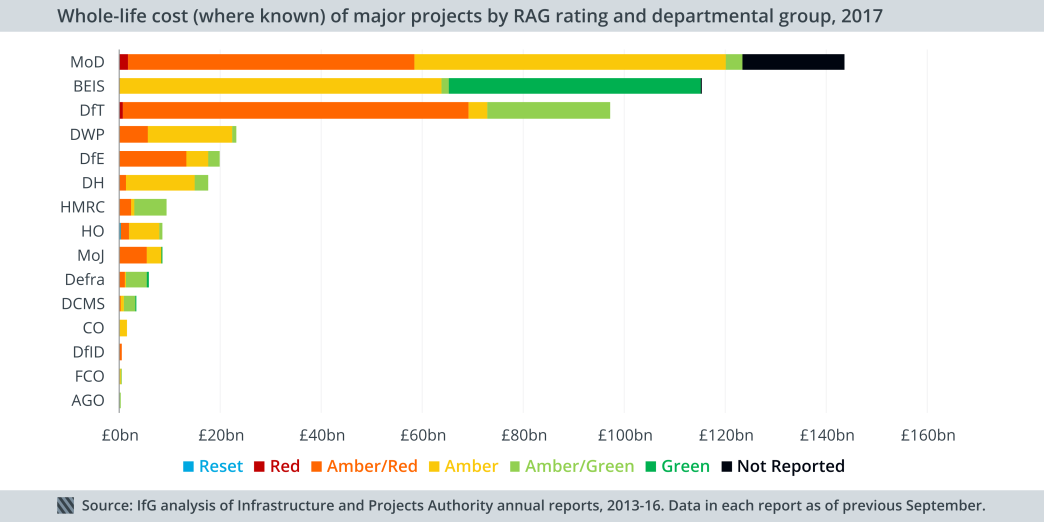
Almost half of the Government’s major projects (48%) are managed by just three departments: the Ministry of Defence is responsible for 33, the Department for Health for 18 and the Department for Transport for 17.
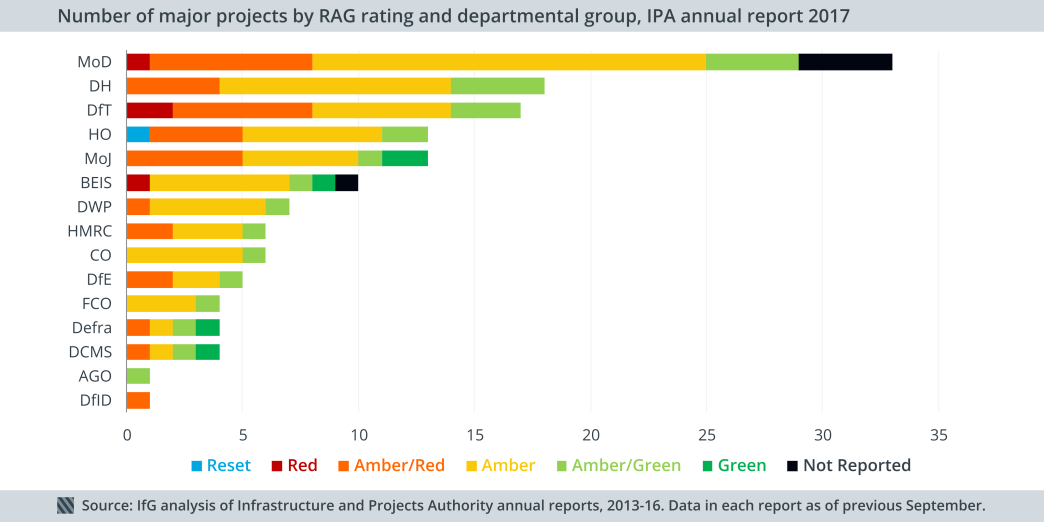
Compared to last year, the Department for Transport is managing an additional seven major projects, having started several rail and road improvement initiatives in the last year. The Cabinet Office is managing five fewer projects.
The Institute for Government has previously argued that the Government’s project portfolio is already too large, and more effective prioritisation is needed.
Implementing Brexit will create new challenges. The National Audit Office has already cast doubt on the Government’s ability to deliver the new Customs Declaration Service by March 2019, and new systems to remove friction at the border and manage EU migration also need to be developed.
- Supporting document
- Whitehall monitor 17.pdf (PDF, 2.17 MB) Infrastructure report (final)r.pdf (PDF, 782.47 KB)
- Topic
- Policy making